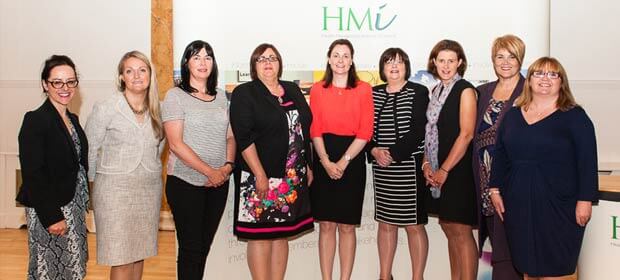Patricia O’Gorman discusses the success of an acupuncture service for Head and Neck cancer patients with Xerostomia (Dry Mouth) post-radiotherapy which she established in the South Infirmary Victoria University Hospital, Cork and which was one of the finalists in the 2015 HMI Leaders Award.

The South Infirmary Victoria University Hospital (SIVUH) Cork, is a major centre for Head and Neck Cancer (HNC) in Ireland, treating in excess of 100 new patients annually. Radiotherapy is an integral part of management of HNC. Xerostomia (the subjective sensation of dry mouth) is a distressing and long-term side-effect post-radiotherapy for HNC patients. Xerostomia seriously impairs patients’ quality of life, affecting oral and dental health, and patients’ ability to taste, chew, swallow, speak and sleep. Radiation-induced xerostomia rarely improves spontaneously and to date no effective treatment is available. Patients manage this condition short-term with continuous use of water, sprays, gels and mouthwashes – all salivary substitutes not salivary stimulants.
To date 170 HNC patients have availed of this service which is unique in Ireland and the UK.
Acupuncture is a core treatment modality used in the Integrative Medicine Departments of some of the larger cancer centres in the US (Memorial-Sloan Kettering, New York; Dana-Farber Institute, Boston; MD Anderson, Houston, Texas) to manage side-effects from cancer and related treatments, e.g. chemotherapy-induced nausea, pain, neuropathy, hot flashes. Research conducted in these and other centres in recent years has shown some positive results with acupuncture treatment for radiation-induced xerostomia also.
Setting up the service
In 2008 I set up an acupuncture service in the SIVUH Physiotherapy Department, for HNC patients suffering from xerostomia post-radiotherapy. Referrals to this service are from SIVUH HNC consultants and Cork University Dental Hospital.
To date 170 HNC patients have availed of this service which is unique in Ireland and the UK. Sixty seven per cent of patients referred have had a clinically significant improvement with treatment (based on a study of all patients treated between April 2008 – April 2014), using the validated and globally accepted outcome measure, the Xerostomia Inventory, before and after treatment. A treatment specific subjective questionnaire captured good qualitative data on these patients also, with reports of improved sleep patterns, improvements in quality and quantity of saliva, less need for water, sprays and gels, better taste, better speech, ability to eat a greater range of food and general improvement in mouth comfort. These improvements in quality of life for patients helped facilitate integration back into home life and return to work.
Acupuncture is generally considered a safe treatment with very few side-effects. It is also relatively cheap to administer. Aside from therapist treatment time, twice weekly for six weeks, the cost of needles per patient is minimal at €10.00 per individual patient. Increased saliva production for patients means less need or total discontinuation of salivary substitutes like gels and sprays. A 30ml bottle spray costs €10.00 – €13.00 and typically lasts 3 days. Costs for one spray equals the cost of acupuncture needles for a full 12 sessions of treatment for one patient. It is impossible to put a costing on benefits for these patients of improved sleep patterns, improved nutrition, improved oral hygiene etc.
Sixty seven per cent of patients referred have had a clinically significant improvement with treatment.
An initial barrier to setting up this service in 2008 was sparse research in this area with little to model this service on. However early positive results encouraged me to keep a thorough database and conduct my own research in SIVUH. Following my presentation at an International Conference on HNC in the UK (2014), a new service has been set-up in St. Oswald’s Hospice, Newcastle-on-Tyne, UK, based on the existing service running in SIVUH, and centres in Fife, Scotland and Barts Trust, London have expressed interest in also starting similar services.
Vision for the future
Acupuncture is currently used in some palliative care settings in Ireland mostly for pain relief and chemotherapy-induced nausea. The success achieved with the SIVUH xerostomia clinic could be replicated in these centres or other HNC centres throughout Ireland. A best practice scenario would be having satellite clinics running in outlying areas utilising skills of existing suitably qualified staff. This would be convenient for patients who currently travel long distances to access my service. Presenting at the HMI Leadership Awards this year was a great opportunity to showcase the success of this new service and facilitated knowledge transfer to a wider audience. I believe that acupuncture can play a significant role in HNC patient care, integrating safely the best aspects of Traditional Chinese Medicine into Western Medicine, using evidence-based practice, at minimal cost. I would encourage other centres to replicate this service.
Patricia O’Gorman, B. Physio, MSc, Licentiate in Acupuncture.
Physiotherapy Department, South Infirmary Victoria University Hospital, Cork.

